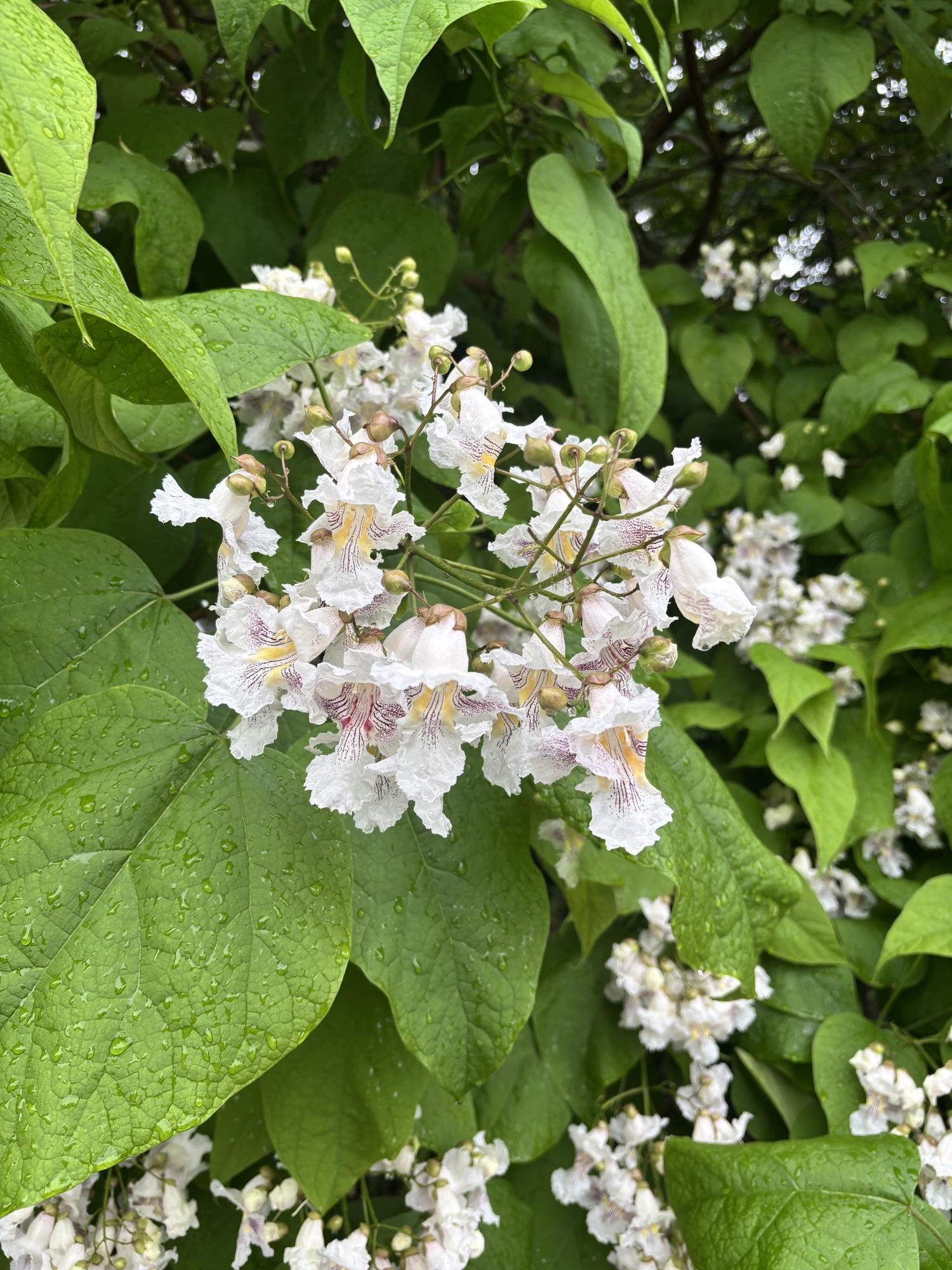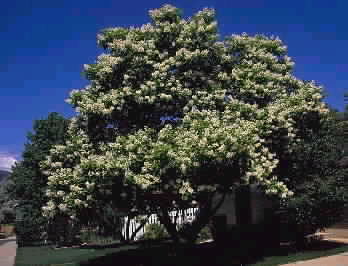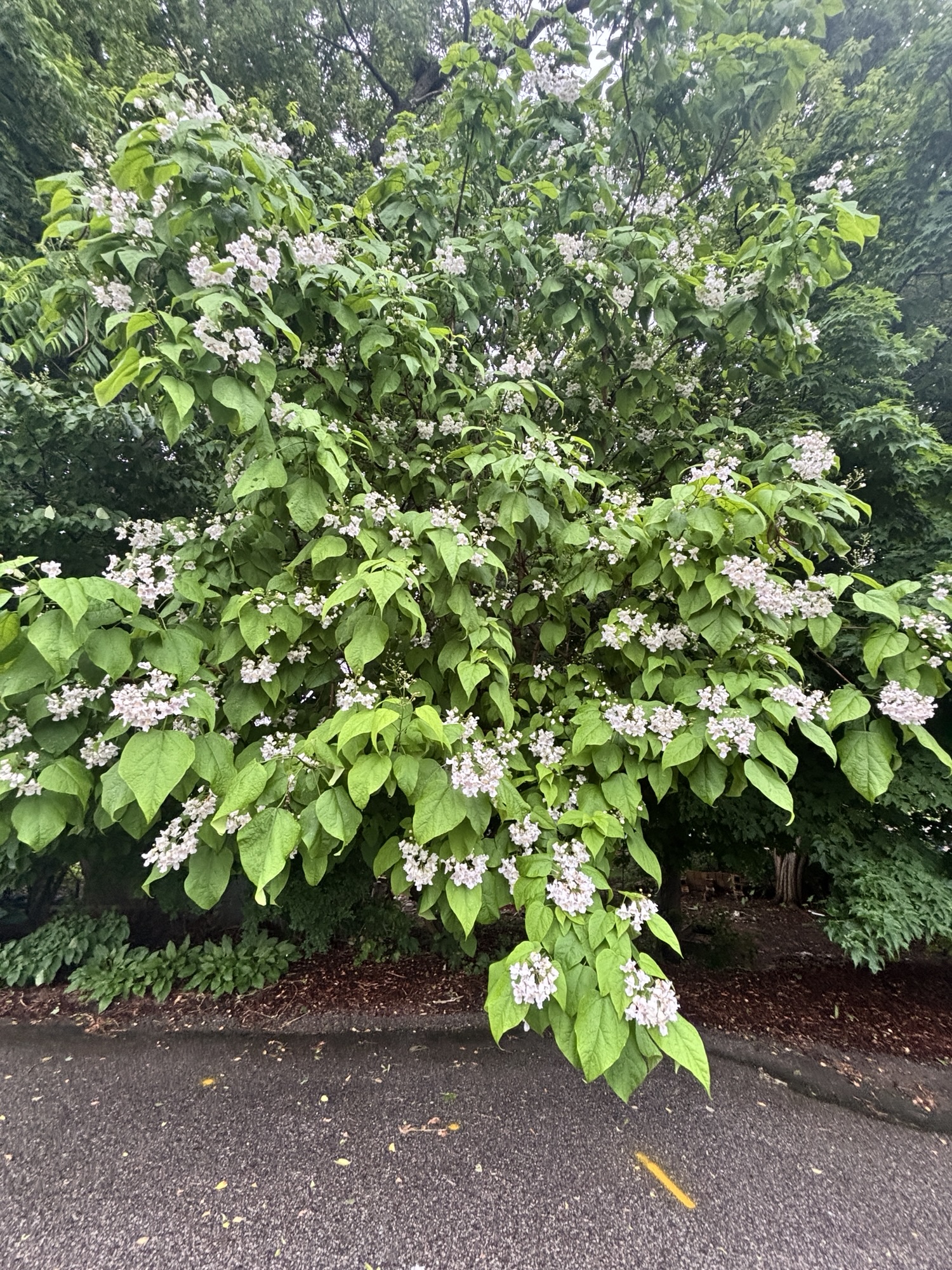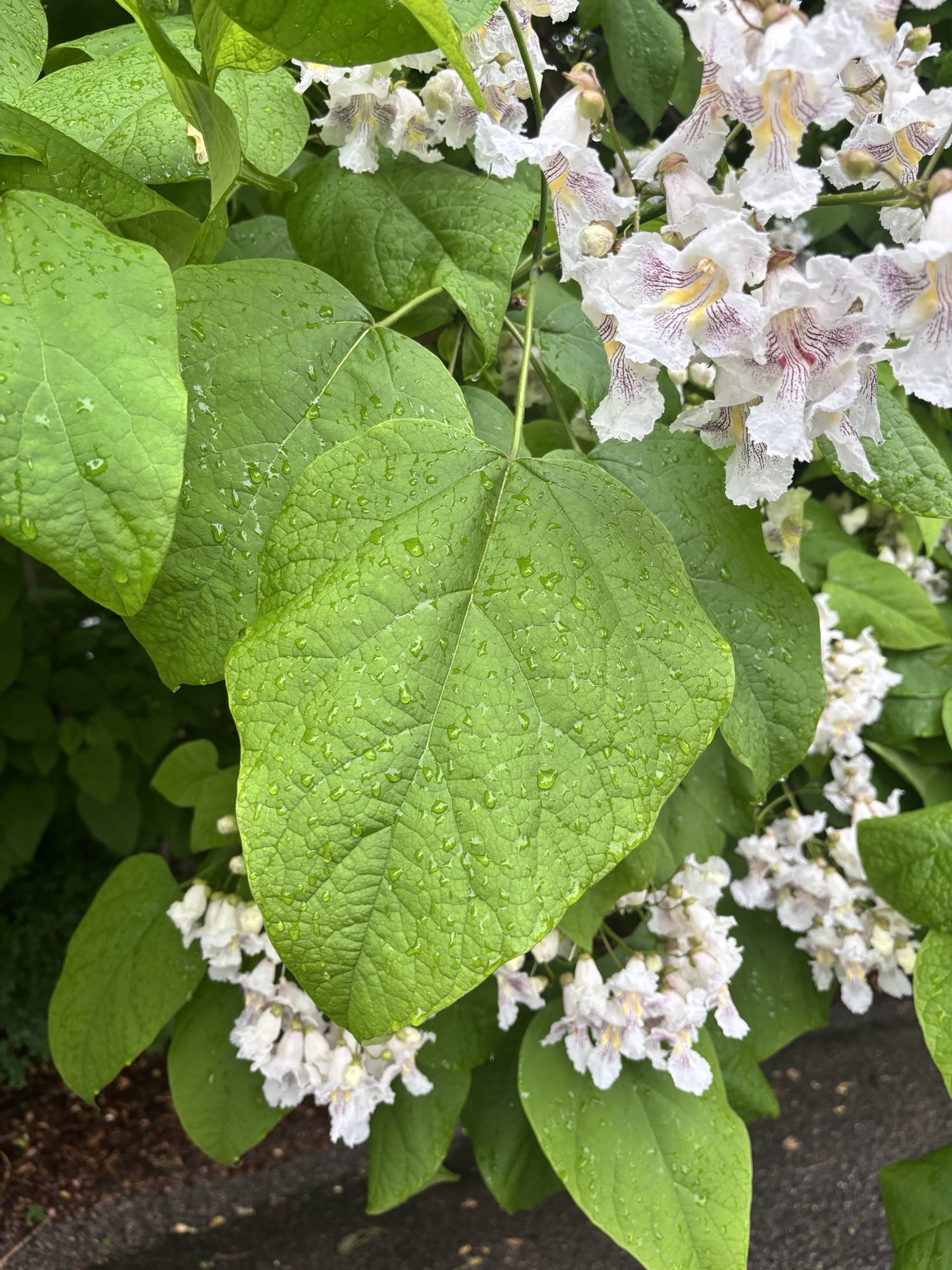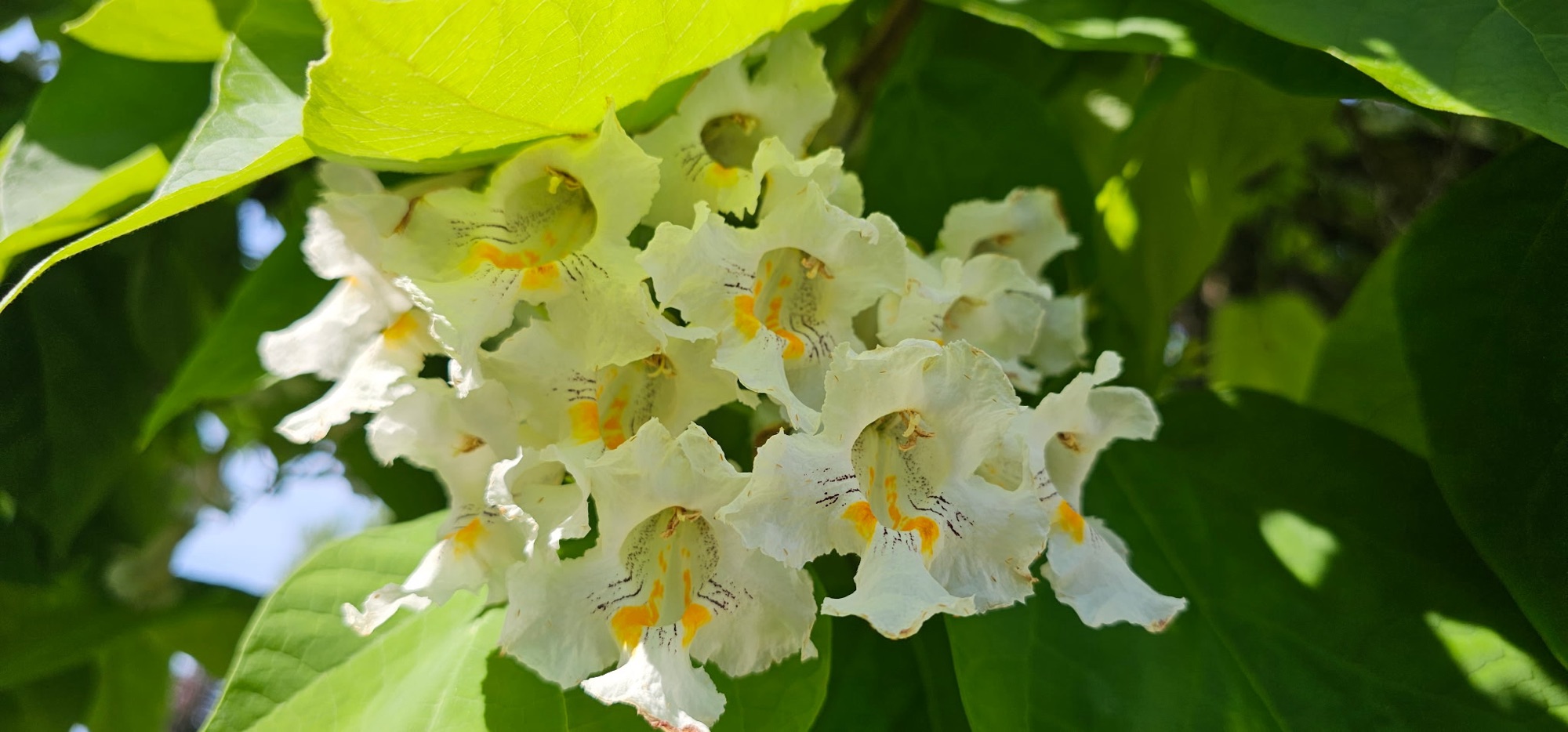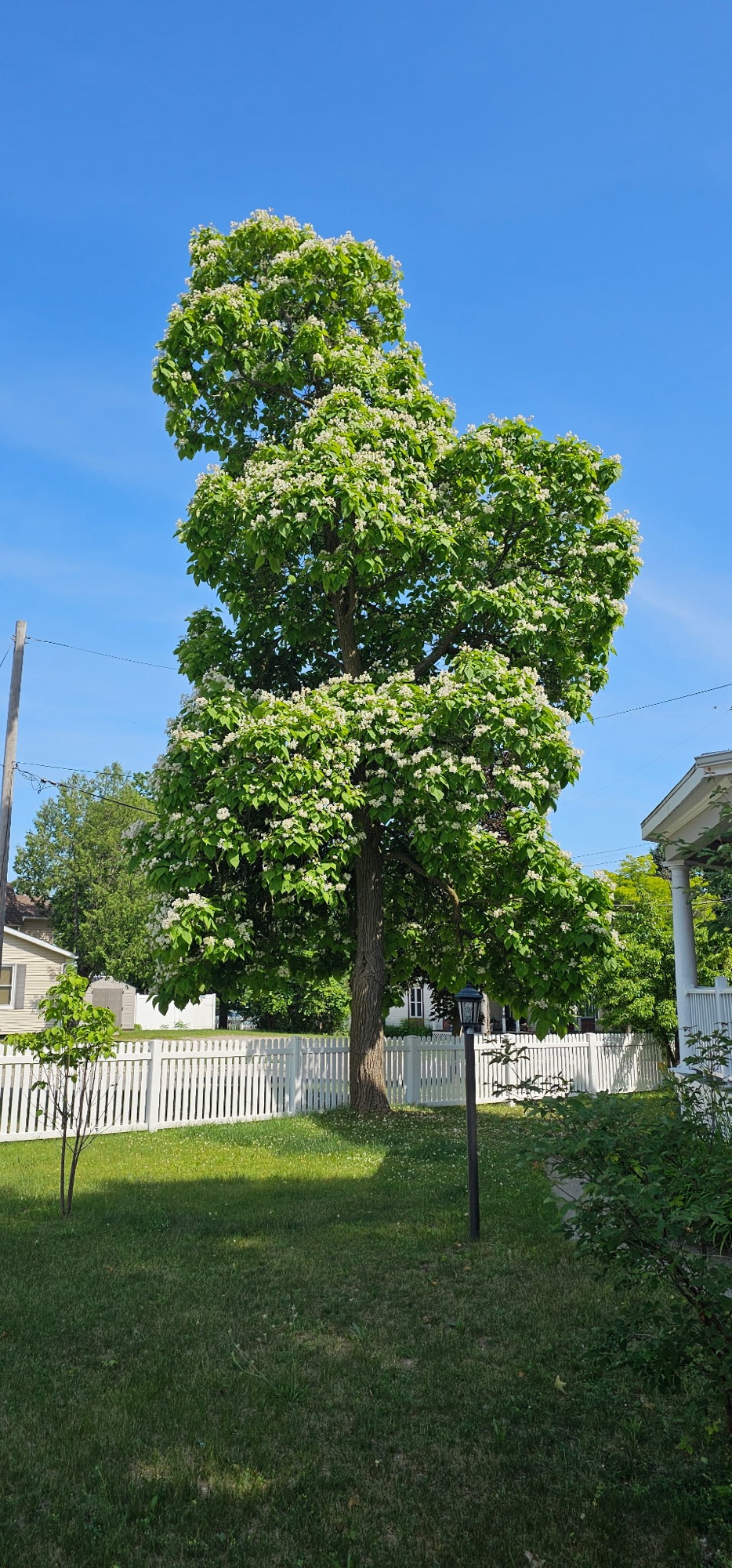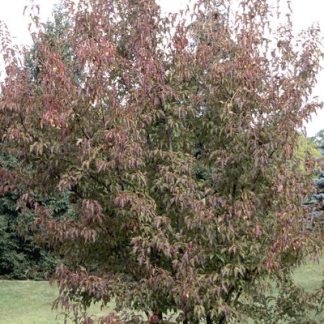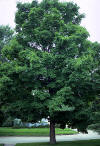Description
Catalpa (Catalpa speciosa) is also known as the Cigar Tree. It tolerates a wide range of soils, including pH in the 7s, and is moderately drought-tolerant but it prefers rich, moist soils in river valleys. The catalpa is tolerant of shade. Catalpa speciosa (Northern Catalpa) grows to 50 feet tall in most urban locations, but occasionally grows to 90 feet. This coarse, large leafed tree spreads 50 feet and tolerates hot, dry weather, but leaves may scorch and some drop from the tree in very dry summers.
The leaves are opposite, very large, growing 8-12″ long and 6-8″ wide, in a heart shape, dark green above and downy beneath, falling off at the first frost. The entire tree is covered in 5″ long white flowers June-July.
The fruit of the catalpa ripens in the fall and persist into winter. The fruit grows in the form of 10-20″ long, giant bean shaped seed pods with fuzzy seeds inside.
The catalpa has no terminal bud. The bark of older trees is dark and furrowed, while the young twigs are greenish. The wood is weak, light, coarse-grained, soft, and brown but the sapwood is very white.
Uses for the catalpa include fence posts and rail road ties.
Common pests include root rot, mildew, leaf spot, catalpa worm, but no serious pests.
Catalpa is commonly found from Virginia west to Kansas, south to Louisiana. It also grows well in Northern Michigan.
Catalpa is a tough tree suited for planting in large-scale landscapes. It often escapes cultivation and invades surrounding woodlands. As a kid growing up in Lansing, my escape was Comstock Park and all the many kinds of trees growing there. The catalpas were easy to climb as most has multiple trunks and we would have sword fights with the beans.
There are several cultivars of catalpa including Manchurian catalpa, which is a small tree from China, the hybrid or tea catalpa, and of course the umbrella catalpa.
